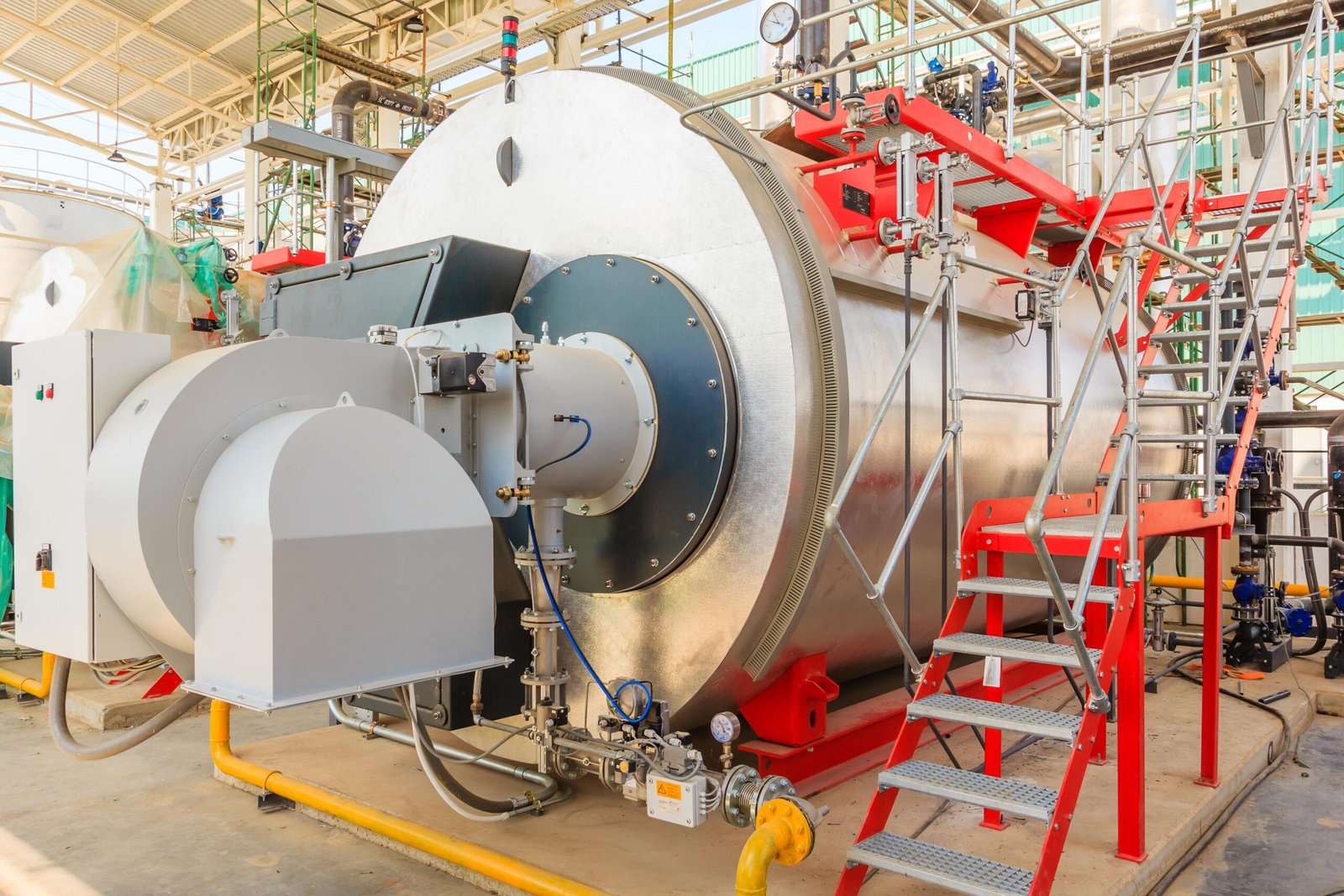In today’s energy-driven environment, industries worldwide prioritise sustainability and efficiency. As countries attempt to reconcile increasing energy demands with environmental obligations, the function of pressure vessels in energy production becomes increasingly important. Pressure vessels are key components in many industrial processes, particularly in energy generation, where they help to improve efficiency and sustainability.
This blog will look at the different types and uses of pressure vessels, how they are made, and how they improve energy production processes. It will also explore their role in promoting the shift to cleaner energy sources.
What Are Pressure Vessels?
A pressure vessel is a closed container that can retain gases or liquids at pressures much higher or lower than atmospheric pressure. These structures are designed to endure high pressures and temperatures while maintaining safety and efficiency in a variety of industrial applications.
What Is a Boiler Pressure Vessel?
A boiler pressure vessel is a type of pressure vessel specifically designed for use in boiler systems. It holds and transfers heat to fluids, usually water, at high pressure to produce steam. This steam is then utilised to generate electricity, heat buildings, or operate industrial processes. Due to the high pressure and temperature circumstances in which boiler pressure vessels work, they must adhere to severe safety norms.
What Is the Purpose of a Pressure Vessel?
Pressure vessels serve various purposes across industries, including:
- Energy Storage and Transfer: They store and transfer energy in the form of pressurized gases or liquids.
- Heat Exchange: Pressure vessels, often known as heat exchangers, transport heat between fluids in power plants and industrial systems.
- Chemical Processing: Pressure vessels are used in refineries and chemical plants to control chemical processes by applying pressure and temperature.
- Steam Generation: Boiler pressure vessels generate steam in turbines, industrial processes, and heating systems.
Their primary purpose is safely holding and handling pressurised fluids, allowing for more efficient energy generation and industrial activities.
Types of Pressure Vessels
Pressure vessels come in various types, each tailored to specific applications. Below are the common types:
Storage Vessels
These are used to keep gases or liquids under high pressure. Examples include power stations’ gas and chemical facilities’ fuel storage tanks.
Heat Exchangers
Heat exchangers are pressure vessels that facilitate heat transfer between two or more fluids. They are vital in power generation and HVAC systems.
Process Vessels
These vessels are used in the chemical, oil, and gas industries to mix, separate, and facilitate chemical reactions.
Boiler Pressure Vessels
Boiler pressure vessels specifically built to produce steam are essential components of thermal power plants and industrial heating systems.
Reactors
Pressure vessels are used in the chemical industry to carry out controlled reactions at precise pressure and temperature settings.
Pressure Vessel Fabrication
Pressure vessel manufacturing is a complex operation that demands precision, experience, and adherence to safety regulations. Here are the main steps involved:
Material Selection
The operating pressure, temperature, and the chemical being stored or processed determines the material used. Carbon steel, stainless steel, and alloys are the most common materials.
Design
The ASME Boiler and Pressure Vessel Code is one of the regulations and standards engineers follow when designing pressure vessels to guarantee efficiency and safety.
Welding and Assembly
Advanced welding processes attach the components, assuring strength and longevity in high-pressure environments.
Inspection and Testing
Pressure vessels are subjected to rigorous testing, such as hydrostatic testing, radiographic testing, and ultrasonic testing, to ensure structural integrity and safety.
Coating and Finishing
Coatings protect vessels against corrosion and extend their lifespan, particularly in severe conditions.
How Pressure Vessels Contribute to Sustainable Energy Production
Pressure vessels play a crucial role in advancing sustainable energy production. Here’s how:
Supporting Renewable Energy Systems
Pressure vessels are critical in renewable energy applications such as:
- Hydrogen Storage: Pressure containers hold hydrogen derived from renewable sources, allowing it to be used as a clean energy carrier.
- Geothermal Energy: Pressure vessels are used in heat exchangers in geothermal facilities to transport heat from geothermal fluids to electricity-producing systems.
Enhancing Efficiency in Thermal Power Plants
Boiler pressure vessels increase thermal power plant efficiency by producing steam at high pressures, which powers turbines more efficiently. High-pressure steam decreases energy losses while increasing power production.
Enabling Carbon Capture and Storage (CCS)
Pressure vessels are essential for CCS systems, as they store and transport compressed carbon dioxide for sequestration, lowering greenhouse gases.
Improving Energy Storage
Large-scale energy storage devices, such as compressed air energy storage (CAES), use pressurised air as a storage medium. This technology improves grid stability and allows for the incorporation of intermittent renewable energy sources.
Reducing Waste
Pressure vessels provide efficient heat recovery and utilisation in industrial operations, reducing energy loss and fuel usage.
Efficiency Gains Through Innovation
Pressure vessel design and manufacturing advancements have increased their contribution to sustainable energy production:
Advanced Materials
The use of lightweight, high-strength materials, such as composite alloys, lowers material costs while increasing durability and heat efficiency.
Optimized Design
Engineers use computer-aided design (CAD) and simulation techniques to optimise pressure vessel designs for specific applications, assuring optimal efficiency.
Modular Fabrication
Modular pressure vessels are prefabricated and built on-site to reduce construction time and costs while maintaining high-quality standards.
Challenges and Future Outlook
While pressure vessels are crucial for sustainable energy production, they face challenges such as:
- High Initial Costs: The fabrication and installation of pressure vessels require significant investment.
- Maintenance Requirements: Inspections and maintenance should be performed on a regular basis to maintain safety and efficiency.
In the future, advances in material science, fabrication techniques, and renewable energy applications will broaden the use of pressure vessels in sustainable energy systems.
Conclusion
Pressure vessels are critical components of modern energy systems, promoting efficiency and sustainability throughout industries. Their uses range from high-pressure steam generation in boilers to renewable energy storage and carbon capture. Pressure vessels will stay at the vanguard of industry innovation and adopt cleaner energy solutions, paving the way for a more sustainable and energy-efficient future.
Visit us to know more!

